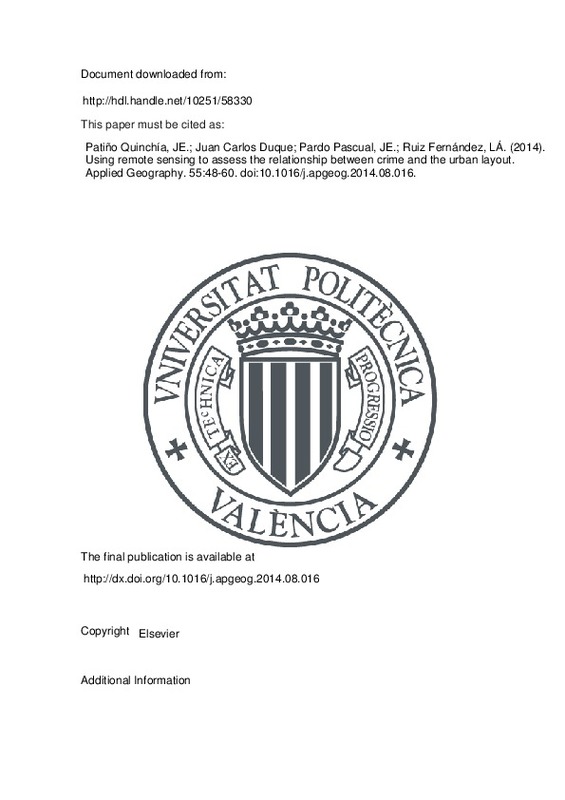JavaScript is disabled for your browser. Some features of this site may not work without it.
Buscar en RiuNet
Listar
Mi cuenta
Estadísticas
Ayuda RiuNet
Admin. UPV
Using remote sensing to assess the relationship between crime and the urban layout
Mostrar el registro completo del ítem
Patiño Quinchía, JE.; Duque, JC.; Pardo Pascual, JE.; Ruiz Fernández, LÁ. (2014). Using remote sensing to assess the relationship between crime and the urban layout. Applied Geography. 55:48-60. https://doi.org/10.1016/j.apgeog.2014.08.016
Por favor, use este identificador para citar o enlazar este ítem: http://hdl.handle.net/10251/58330
Ficheros en el ítem
Metadatos del ítem
| Título: | Using remote sensing to assess the relationship between crime and the urban layout | |
| Autor: | Patiño Quinchía, Jorge Eduardo Duque, Juan Carlos | |
| Entidad UPV: |
|
|
| Fecha difusión: |
|
|
| Resumen: |
[EN] The link between place and crime is at the base of social ecology theories of crime that focus in the
relationship of the characteristics of geographical areas and crime rates. The broken windows theory
states that ...[+]
|
|
| Palabras clave: |
|
|
| Derechos de uso: | Reserva de todos los derechos | |
| Fuente: |
|
|
| DOI: |
|
|
| Editorial: |
|
|
| Versión del editor: | http://dx.doi.org/10.1016/j.apgeog.2014.08.016 | |
| Código del Proyecto: |
|
|
| Agradecimientos: |
This research was made possible by funding from EAFIT University (EAFIT-435-000060) and the Medellin City Hall EnlazaMundos program. The authors thank the anonymous reviewers and Hermilson Velazquez, Andr es Ramírez Hassan ...[+]
|
|
| Tipo: |
|







![[Cerrado]](/themes/UPV/images/candado.png)


